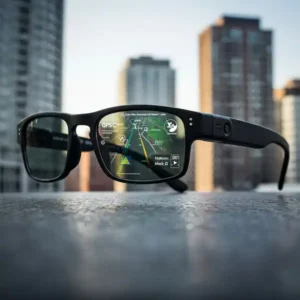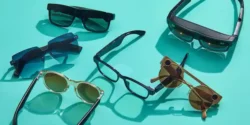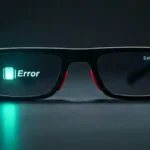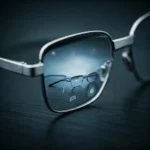Use Smart Glasses with GPS to Navigate your Way
Smart glasses are evolving beyond simple notifications, and one of their most promising applications is integrated GPS navigation. This introduction will explore how GPS functionality works within smart glasses, the key considerations for users, and the potential impact on everyday navigation.
The integration of GPS technology into smart glasses presents unique challenges and opportunities. We will explore the hardware and software considerations involved in delivering accurate and efficient navigation within a wearable heads-up display.
Using GPS with smart glasses involves a few key aspects, and it can vary depending on the specific smart glasses you’re using. Here’s a breakdown of the general process and key considerations:
General Functionality:
- Connection to a Smartphone:
- Many smart glasses rely on a Bluetooth connection to a smartphone. The smartphone’s GPS provides the location data, which is then displayed on the glasses.
- The smart glasses act as a display, showing navigation information from the smartphone’s GPS app.
- Heads-Up Display (HUD):
- Smart glasses with GPS capabilities typically feature a HUD that projects navigation information into the user’s field of view.
- This allows users to see directions without having to look down at a phone screen.
- Navigation Information:
- The displayed information can include:
- Turn-by-turn directions.
- Distance to destination.
- Directional arrows.
- Maps.
- The displayed information can include:
- Control Methods:
- Smart glasses may offer various control methods, such as:
- Voice commands.
- Touch controls.
- Gesture controls.
- Smart glasses may offer various control methods, such as:
Key Considerations:

- Compatibility:
- Ensure that the smart glasses are compatible with your smartphone’s operating system (iOS or Android).
- Check which navigation apps are supported by the smart glasses.
- Accuracy:
- The accuracy of the GPS navigation depends on the smartphone’s GPS signal.
- Factors such as buildings, trees, and weather conditions can affect GPS accuracy.
- Battery Life:
- GPS usage can drain battery life quickly. Consider the battery life of both the smart glasses and the smartphone.
- Safety:
- While smart glasses can enhance navigation, it’s essential to remain aware of your surroundings.
- Avoid relying solely on the glasses and always exercise caution.
Examples of Smart Glasses with GPS Functionality:
- Navigation Display:
- Some smart glasses project directional arrows and distance information into the user’s peripheral vision.
- Real-Time Data:
- For activities like cycling or running, some smart glasses can display real-time data such as speed, distance, and pace.
- Augmented Reality (AR) Navigation:
- Advanced smart glasses may use AR to overlay navigation information onto the real-world view.
In essence, smart glasses with GPS functionality aim to provide a hands-free and convenient way to navigate, enhancing safety and situational awareness. Sources and related content
Frequently Asked Questions About Using Smart Glasses with GPS
Q: How do smart glasses use GPS?
A: Most smart glasses don’t have built-in GPS. Instead, they connect to your smartphone via Bluetooth. Your phone’s GPS provides location data, and the glasses display navigation information like turn-by-turn directions and maps.
Q: What kind of navigation information can I see?
A:
- Turn-by-turn directions: Arrows and text guiding you along your route.
- Distance to destination: How far you are from your goal.
- Maps: Simplified maps overlaid on your real-world view (in some cases).
Q: Are there any special considerations I should keep in mind?
A:
- Compatibility: Ensure your glasses are compatible with your smartphone’s operating system (iOS or Android) and that they support the navigation apps you want to use.
- Accuracy: GPS accuracy can be affected by factors like buildings, trees, and weather.
- Battery Life: GPS usage can drain your phone’s battery faster.
- Safety: Always be aware of your surroundings and don’t rely solely on the glasses for navigation.
Q: What are the benefits of using smart glasses with GPS?
A:
- Hands-free navigation: No need to constantly look down at your phone.
- Improved safety: Keeps your eyes on the road or trail.
- Enhanced situational awareness: Can provide additional information like points of interest nearby.
Q: Are there any privacy concerns?
A:
- Data usage: GPS and navigation apps use location data. Be mindful of your privacy settings.
- Surveillance: In theory, the glasses’ camera could be used for surveillance, but most models prioritize user privacy.
Additional helpful information:
Be sure you have a good connection between your smart glasses and your smartphone – How to Connect Smart Glasses to Phone?
More basic details about how to use smart glasses – How to Use Smart Glasses? – A Beginners Guide
Will smart glasses replace smartwatches? – Transition From Smartwatches to Smart Glasses




